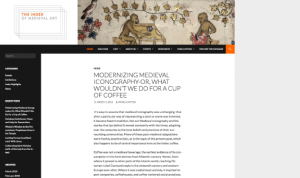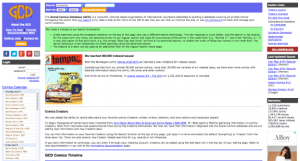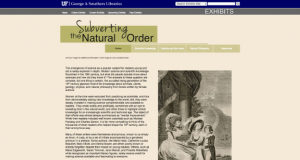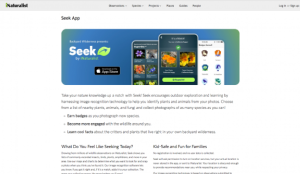 |
April 6, 2018 Volume 24, Number 14 |
Research and Education |
General Interest |
Network Tools |
Revisited |
In the News |
Research and EducationBack to Top | |
 |
|
 |
|
 |
|
 |
|
 |
|
 |
|
 |
|
General InterestBack to Top | |
 |
|
 |
|
 |
|
 |
|
 |
|
 |
|
 |
|
Network ToolsBack to Top | |
 |
|
 |
|
RevisitedBack to Top | |
 |
|
In the NewsBack to Top | |
Lost Painting by Dutch Master Otto van Veen Found in a Theater in Des Moines, Iowa | |
|
A Lost Painting is Rediscovered. Have You Checked Your Closests Lately? Found Painting in Hoyt Sherman Has Been in a Storage Bin for 95 Years Forgotten Old Master Painting Rediscovered in Iowa Storeroom Rijksmuseum: Otto van Veen The National Gallery: Peter Paul Rubens See the Top 10 Art Discoveries of 2016 Two years ago, Robert Warren, the executive director of the Hoyt Sherman Place theater in Des Moines, Iowa, was scouring a closet in search of Civil War-era flags. He ended up stumbling upon a faded oil painting accompanied by a label from the Metropolitan Museum of Art and a tag revealing that the work had been loaned to the Iowa Women's Club in 1922. The painting, as it turned out, was Apollo and Venus, painted by sixteenth century Dutch master Otto van Veen. The painting portrays Venus at work on a painting, accompanied by Apollo, Cupid, and a basket of fruit. The painting first arrived in Iowa in 1871, when Nason Bartholomew Collins brought it along when he moved to Iowa (previously, Collins had lent the work to the Met). In 1922, a descendent of Collins loaned the painting to the Women's Club. Why did the painting "disappear" after this loan? While no one knows for sure, Warren wonders if the theatre had been reluctant to display the painting because it contained nudity. The painting has been restored by Barry Bauman and will go on display at the theatre in July. [MMB] The first three links take readers to articles about this accidental art discovery. These articles come from Laura M. Holson of The New York Times, Rob Dillard of Iowa Public Radio, and Susan Rose Sharp of Hyperallergic. Readers interested in exploring van Veen's art may do so via the forth link, courtesy of the Rijksmuseum. Otto van Veen is perhaps most well-known as a mentor to artist Peter Paul Rubens. Readers may explore Ruben's work, courtesy of the National Gallery, through the fifth link. Finally, for readers who enjoy learning about extraordinary and unexpected art finds, the last link takes readers to a list by Art Net News that chronicles ten art discoveries from the year 2016. | |





